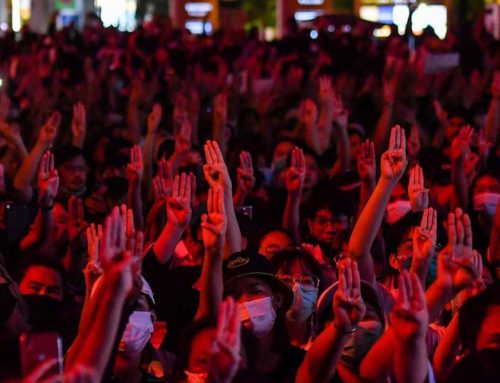ECONOMY
The silver lining to America’s ‘fizzling pivot’
GWEN ROBINSON, senior Asia editor, Nikkei Asian Review
February 5, 2014 19:58 JST
WASHINGTON — On the face of it, Harry Reid, the U.S. Senate majority leader, was simply doing what any self-respecting protectionist might do in response to a government initiative seen as a potential threat to local jobs: A day after President Barack Obama called in his State of the Union speech for special authority to fast-track trade bills, he announced he would block any such moves in Congress.
In one fell swoop, the Nevada Democrat succeeded in undoing Obama’s much-vaunted Asia “pivot” strategy as well as his ambitious trade liberalization agenda. For the embattled U.S. president, gaining so-called trade promotion authority, which would leave Congress with just a simple yes-or-no vote on trade deals and ward off amendments, was crucial to his high-stakes push to promote engagement with the Asia-Pacific region. It was key to the sweeping Trans-Pacific Partnership trade pact.
Months of painstaking discussions over the TPP proposal between U.S. officials and their counterparts in 11 Asian and Latin American countries crashed with Reid’s announcement, as did talks on a similar pact with Europe. As the top Democrat in Congress, the Senate majority leader holds sway over what legislation makes it to the floor. There is a small chance the fast-track proposal could be reintroduced at a later stage if Reid softens his hard-line opposition, or that the House might take the initiative on the issue. Both seem unlikely for now. Already, the resulting implosion of ongoing trade negotiations has damaged U.S. credibility with its trading partners, including Europe and Japan; it has savaged Obama’s Asia pivot strategy and sent the TPP talks into limbo. Beyond trade, it has complicated Washington’s strategic push to rebalance U.S. defense posture away from Europe and the Middle East to Asia. Not only that, it has inadvertently strengthened China’s regional charm offensive to woo Asian countries and draw them into a separate regional trade initiative.
Yet, lost in the dramatic headlines about Obama’s “fizzling Asia pivot” is the notion that Reid may well have done everyone a favor — from the U.S. president to local unions and, particularly, leaders of the negotiating nations, who were hardly relishing prospects of selling the TPP to their own protectionist constituencies.
For Obama, failure to secure fast-track authority could ultimately avoid a potentially damaging loss of face over wobbly pivots and half-baked trade pacts. And it would avert inevitable clashes over the issue in Congress at an increasingly difficult time for the second-term president. Well before Reid’s TPP bombshell, the administration’s famed “Asia pivot” was already losing momentum. On the trade front, some participating countries were beginning to signal serious doubts about tough entry criteria such as labor and environmental standards that U.S. pressure groups wanted to attach to the pacts.
The U.S. rebalancing strategy hinges on two components: one is physical, to shift the majority of U.S. troops and military assets abroad to the Asian region; the second is a broader goal, to refocus U.S. economic and foreign policy priorities on greater regional engagement while offsetting China’s growing influence in Asia. To this end, Obama in the past year has deepened ties with such countries as the Philippines, Vietnam and, notably, Myanmar. He has promoted closer security relations with Australia and Singapore, among others, and cajoled Japan into considering the sacrifices necessary to open its domestic markets.
Neither of these “subpivots” are technically hampered by the absence of presidential trade negotiating authority. Indeed, the physical shift continues, albeit in increments, with the relocation of more U.S. ships, personnel and facilities to Asia, including Australia, away from the Middle East and Europe.
But the overall pivot was about much more than military configurations. It was sold to the American public as a bold strategy to capitalize on rapid economic growth of the Asia-Pacific region as well as countering China’s hold. In urging U.S. parties to support the TPP deal, Obama insisted it would open new markets for American goods and create jobs at home.
White House rhetoric, as with so many issues, failed to match the reality. Even before Obama abruptly canceled his Asian tour last October to deal with the U.S. budget crisis, the administration’s strategic focus was drifting from Asia. In recent months, U.S. Secretary of State John Kerry has been fixated on nuclear negotiations with Iran and the crisis in Syria, among other issues. Last week, at the Munich Security Conference, both Kerry and U.S. Defense Secretary Chuck Hagel hailed a “renewed and enhanced era of partnership with our friends and allies, especially here in Europe.” The two made almost no mention of Asia pivots as they spoke of continued U.S. engagement around the world.
From the Asia-Pacific perspective, the end of TPP for now might come as a relief. Negotiations were already shaky and increasingly tense, as concerns grew among core participants about the effort required to open domestic markets, and amid China’s increasing offers of aid, investment and trade.
In the ruins of the White House’s fast-track push,, even Obama’s own Democrats, like Reid, are opposed to reviving the legislation. Some in the administration are clinging to optimism, summed up by Kerry’s wishful-sounding reassurance to European allies that fast-track authority could well be passed in coming months. “I’ve heard plenty of statements in the Senate on one day that are categorical, and we’ve wound up finding accommodations,” he said.
Reid, playing to protectionist sentiments, seems willing to take his place in history as the man who sank the administration’s Asia pivot and cornerstone trade pacts. In the long run, for Obama and for doubtful leaders in the TPP countries of Asia and Latin America alike, that could be the biggest favor he could do for them.
Source Link: NIKKEI ASIAN REVIEW






